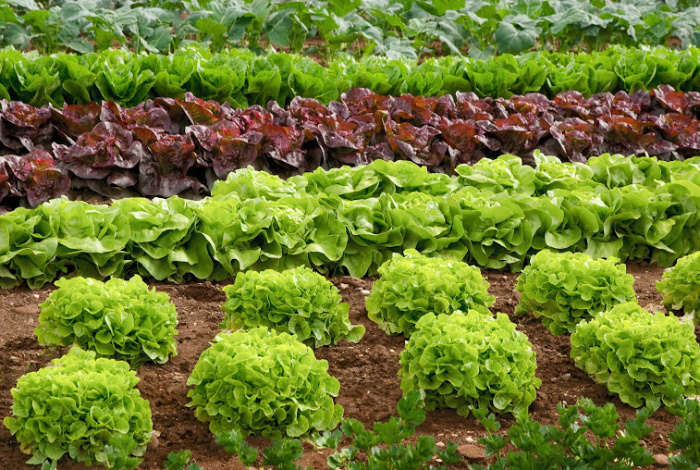
Are you ready to learn about what to plant in April? Oh my gosh, I can hardly wait to get my hands in the earth. Mark and I picked up some organic soil and worm castings to add to my grow boxes in the backyard.
My gut is telling me we must learn to grow as much of our own food as soon as possible. We must be prepared for the unexpected. Growing our own food is one more step to being self-reliant. This is where I buy my seeds: SeedsNow
Soil Amendments
The first thing we need to do is pull any weeds that have come up since the last time you turned over the soil. Dig out any leftover crops that you may have missed the last time you harvested.
Turn the soil several times and add the following amendments, if you need them. You may remember, I have raised garden beds because I don’t want to bend down as far to work in my garden anymore.
I’m adding two more raised beds this year, I feel an urgency to raise more food for my family.
Unco Industries Wiggle Worm Soil Builder Earthworm Castings Organic Fertilizer, 15-Pound
Miracle-Gro Nature’s Care Organic Bone Meal, 3 lb.
Espoma VM8 8-Quart Organic Vermiculite
Update on Soil:
I’m so excited I found some really awesome soil that I have now used for three years, as of this spring. I do not have to add any amendments to it. Each year I add two bags to each of my raised garden beds. (Because of the soil sinking). I really hope it is available in your area.
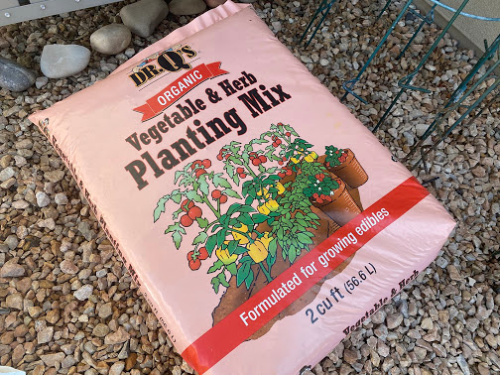
This picture shows how my raised garden beds look after adding two new bags this year. I have to put my tomato cages in them because my puppy likes to jump up in the boxes and look around. I’m trying to break her habit.
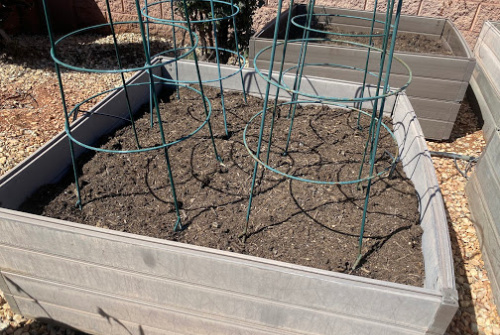
Soil pH Levels
What Does The Term pH Level Mean?
Are you wondering what the term pH level means when it comes to gardening? Each plant prefers a different level of acidity to grow the very best harvest. The level of acidity varies between each plant.
Therefore, you can adjust the pH of your soil by adding lime or sulfur to bring it up or down depending on what your soil needs. You can have your soil tested, possibly by your state extension service, or try and do it your self with a soil tester. pH Tester
What Does The Term Harden Off Mean?
This is when you have already planted the seeds, and they have germinated, sprouted, and you have thinned out the sprouts you do not want.
Now you need to get the plants ready to transplant outside without any issues. “Hardening off” means you are slowly taking the seedlings outside a few hours each day to get them used to sunlight, the dry air, and cold nights.
I call it my prepping time. You start with 2-3 hours a day and gradually add more hours each day for 7-10 days. Do not fertilize during this time. Do not overwater either.
We are getting the plants prepped to be outside and ready to transplant. Watch the temperatures to make sure the seedlings can handle the cold weather. Every vegetable plant is different. This is where I buy my seeds: SeedsNow
What to Plant in April by Zone
Originally I posted what to plant in April based on where I live, but I have realized that all zones are different. What you can plant in one area you may not be able to plant in another. So, I decided to break up what to plant in April by zones. You can find your zone, here.
Zone 1 and 2
It is still pretty cold in April if you live in zone 1 and 2. However, there are still a few things you can start planting. Here’s a list:
- Cabbage
- Cauliflower
- Chives
- Lettuce
Zone 3 and 4
If you live in zone 3 or 4, it is best to wait until after April 15th to plant many of these in your garden. Here is what you can start indoors and move outdoors when there is no longer any frost:
- Asparagus
- Beets
- Broccoli
- Brussel Sprouts
- Cabbage
- Carrots
- Cauliflower
- Kale
- Lettuce
- Onions
- Parsley
- Peas
- Potatoes
- Radishes
Zone 5 and 6
April is the perfect time to start planting stuff in zone 5 and 6. Here’s what you can start planting:
- Asparagus
- Basil
- Bush Beans
- Beets
- Broccoli
- Cabbage
- Carrots
- Lettuce
- Peas
- Potatoes
- Spinach
Zone 7 and 8
It is quite warm in zone 7 and 8 during April. Here are the things you may want to start planting:
- Bush Beans
- Poles Beans
- Cantelope
- Corn
- Cucumbers
- Eggplant
- Peas
- Peppers
- Okra
- All warm-season herbs
- Squash
- Sweet potatoes
- Tomatoes
- Watermelons
Zone 9 and 10
April is like summer in zone 9 and 10. So, you will want to plant warm-weather plants. Here’s what to plant:
- Bush Beans
- Pole Beans
- Cantaloupes
- Corn
- Cucumbers
- Varieties of peas
- Peppers
- Pumpkins
- Summer squash
- Tomato transplants
- Sweet potatoes
- Watermelons
What To Plant In April
1. Asparagus
Asparagus is one vegetable you need to realize takes 2 to 3 years for the plants to get started and produce. It’s totally worth the wait, I promise.
These are perennial, meaning they will come back year after year once they get established. The plants will grow year after year, sometimes even up to 30 years.
You need to decide how much your family likes asparagus. We purchased 20 plants which are 10 for each of us. It’s all about how much you want to produce.
My suggestion is a minimum of ten plants per person in the household. Once it gets established you will have asparagus for life. You can eat it raw, cooked, and even freeze it.
Asparagus likes a cool winter to go dormant and grow strong for spring. You will have better luck if you have colder winters over mild winters. It makes the stocks get stronger.
They like well-drained soil with a lot of organic matter. Plant the plants two inches deeper than the original growth mark. Plant them at least 6-8 inches deep running the length of the row.
Space the plants 12- to 18 inches apart. After planting them be sure and water the soil around them. Keep fertilizing them with Miracle Grow All Purpose liquid or granules as they grow.
After the first frost, cut back the 4-foot foliage or ferns when they turn brown from the freezing temperatures in the fall. Watch for weeds around them and remove the weeds.
The younger the stalks, the shorter the producing time. Older asparagus will produce up to eight weeks. Snap the shoots when they are about 8 inches tall at the baseline of the soil.
I prefer my spears the size of a pencil. They are more tender when picked this size. Be careful not to “bruise” other stalks by cutting them with a knife. SeedsNow
pH level for Asparagus: 6.0-8.0
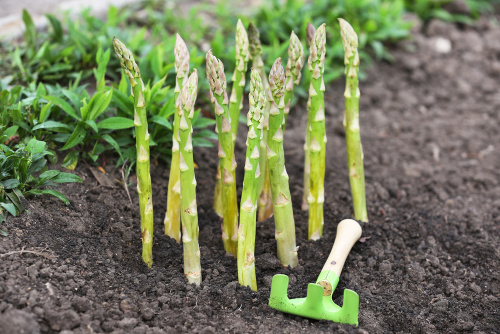
2. Basil
Plant the seeds 1/2 inch deep and 12 inches apart. The seeds will germinate in about 5-10 days and they need the soil temperature to be 65-85 degrees. Plant the seeds in full sun to get the best harvest.
Once the plants reach six-inches tall start cutting them back so they will branch out and have stronger stems.
They need soil that drains well. Fertilize them with Miracle Grow All Purpose Liquid or granules and water it in. Water often, but don’t over-water.
Some people like to plant different varieties of basil together. Once you see those white flowers, cut back the basil big time. It will come back, I promise if the weather is still good.
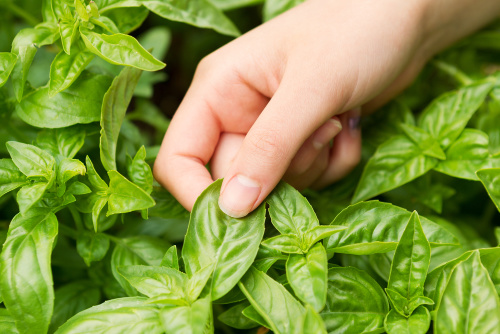
pH level for Basil: 6.0 -7.0
3. Cauliflower
Cauliflower is a cool-season crop, however, it’s a bit more temperamental than broccoli. The trick is having cool temps consistently in order to produce crops with larger heads like grown in coastal neighborhoods.
Cauliflower likes temps around 60 degrees, if the temperatures get too hot or too cold, it stresses the plants and produces tiny buds.
Plant the seeds about 18 inches apart with rows 30 inches wide. Cover the seeds with soil and compost. Water in the seeds gently.
When the cauliflower heads are about two inches in diameter, cover them with their own leaves, if possible, to shade and protect them. Ideally, the head will grow to 6-7 inches in diameter.
pH level for Cauliflower: 5.5 – 7.5
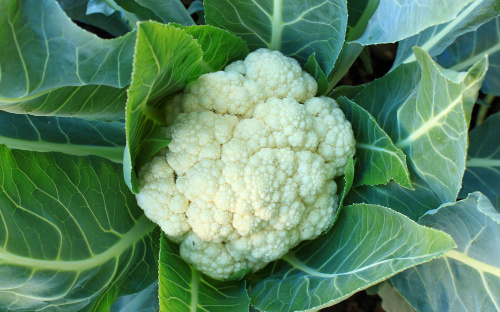
4. Celery
Celery seeds are so tiny you may want to mix them with sand before sprinkling them over the loamy, well-drained soil described above with nutrients added.
The temperatures need to be at least 50 degrees F. (10 C) before you plant the seeds. Cover the seeds with a little bit of soil and sprinkle the seeds with water.
They like to be planted shallowly. Once you see some sprouts you will want to thin them. They will not tolerate a drought at all.
They need a lot of water, so keep that in mind when deciding where you plant them. Please fertilize regularly to have the best harvest.
pH level for Celery: 5.8 -7.0
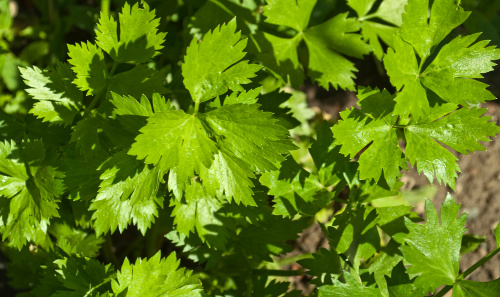
5. Eggplant
Start the seeds indoors about 4-6 weeks before you transplant them outside. Plant the seeds 1/4 inch deep in Organic s
Prepare the soil outside to transplant the seedlings with a 5-10-5 fertilizer spread with 1-inch of well-rotted manure. Transplant the seedlings when they are 3-4-inches tall and space them 24-30 inches apart in the garden beds that you have prepared for them.
Cover the base of the seedlings with a good mulch to protect the plants.
Stake the plants right away because the eggplants get heavy very quickly. I have used tomato cages that work great, but mine are heavy duty and will not tip over.
After planting, water well. Fertilize every two weeks. Watch for the number of eggplants growing. Thin the eggplants to five or six per plant to have the best harvest. Eggplants take 100-120 days to reach maturity from seed to plant.
Eggplants prefer warm weather over cool weather. They prefer the soil to be 70-90 degrees F. to germinate. They need one-inch of water per week.
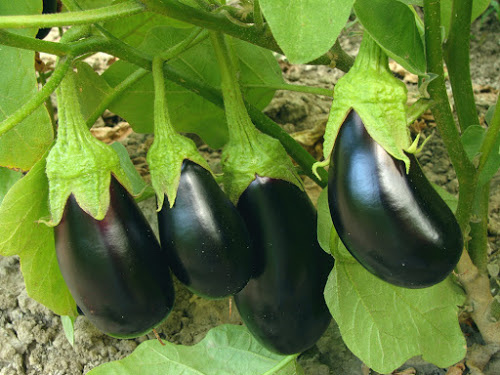
pH level for Eggplant: 6.3 – 6.8
6. Melons (last two weeks of April)
Melons are actually really easy to grow, if you have three things. Sunshine, warm weather, and amended soil with well-rotted manure and organic compost.
The soil temperature has to be above 70 degrees in order to germinate the seeds. I typically plant three seeds in each hole about 1-inch deep and space them 36-inches apart to allow for growth.
Once the seeds grow to 3-4-inches, I choose between the three seeds that sprouted and discard the weakest of the three leaving two standing sprouts.
Melons need water because they are made up mostly of water, so never let them dry out. Be careful with the foliage because that’s where the sweetness comes from.
Keep the garden weeded so you can keep an eye on the fruit when it starts to grow. To test if the fruit is ripe, carefully lift the fruit and twist it, it will easily slip off the stem if ripe. SeedsNow
Late melons do not slip off the stem when ripe. Honeydews are ready to pick when the area where the melon rests on the ground turns from yellow to white.
Hales Best Cantaloupe: Day to maturity 85-100 days
Honey Rock Cantaloupe: Day to maturity 85-100 days
All Sweet Watermelon: Day to maturity 90 days
Sugar Baby Watermelon: Day to maturity 75 days
Tom Watson Watermelon: Day to maturity 85 days
Crimson Sweet Watermelon: Day to maturity 85 days
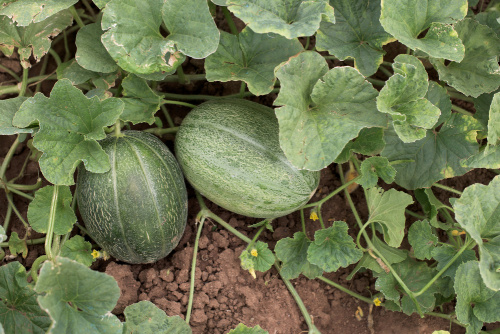
pH level for Melons: 6.0 – 6.5
7. Oregano
You can grow oregano in the ground or in pots. It’s actually a perennial, so it will come back year after year. You need to keep it under control because it will take over the garden, so cut it back as needed.
It’s stronger in flavor once dried compared to when it’s freshly picked. Sow your seeds indoors about 4-6 weeks before you plant the seedlings outside. Use a good potting soil and cover the seeds with a little soil. They will germinate very quickly.
Make sure the soil has a temperature of 70 degrees before transplanting them outside. Plant the seedlings at least eight to ten inches apart.
They will actually grow very well in light soil and with very little fertilizer. They do well growing around tomatoes and peppers as companion plants. Water only when the soil is dry to the touch.
I let mine grow to eight inches tall and harvest the leaves before they flower. The leaves dehydrate very well.
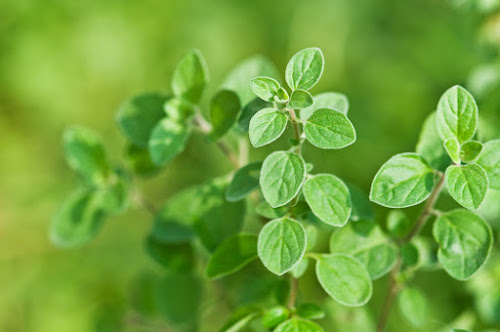
pH level for Oregano: 6.5 – 7.0
8. Peppers
Start your sweet peppers inside about 8-10 weeks before the last spring frost date in your neighborhood. I typically put three to four seeds in each seedling container and thin them down to two plants once they are about 4 inches tall.
I use Miracle Grow Organic Potting soil, it works great when planting my seeds. I plant them 1/4 inch deep, cover with soil and water them.
Once the soil temperature stays above 65 degrees you are good to transplant. Be sure and “harden off” the seedlings ( as discussed above) about ten days before the transplant date.
Fertilize the soil before planting the seedlings. Plant the seedlings about 18 inches apart. Sweet peppers require water and do not like the soil to dry out from the heat. They need to be watered as needed.
Canary Bell matures in approx. 100 days
Big Red matures in approx. 75 days
Coral Bell matures in approx. 88 days
California Wonder matures in approx. 75 days
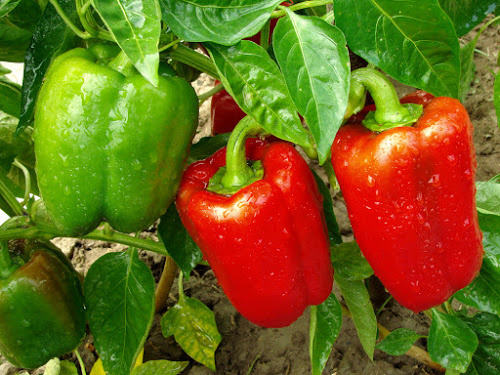
pH level for Peppers: 5.5 – 7.0
9. Rosemary
Rosemary is a great herb to grow, but it’s a bit more challenging to grow from seeds compared to other herbs. Rosemary seeds are best started indoors and transplanted as a seedling.
Plant several seeds in one container with potting soil because they may not all germinate. Cover the seeds with a thin layer of soil and gently water the seeds.
Thin the seeds if needed once they start to sprout. Do not overwater. Rosemary doesn’t like a lot of water.
The soil has to be warm outside in order to transplant the seedlings. The soil must be 80-90 degrees F before you can move them outdoors.
It’s a woody perennial that won’t be ready for harvesting the first year. Some people buy the plants at their local nursery because they are harder to get started from seeds.
Where I live in Southern Utah it takes over the yard. You have to really keep cutting back or you will have a shrub three feet or more in diameter.
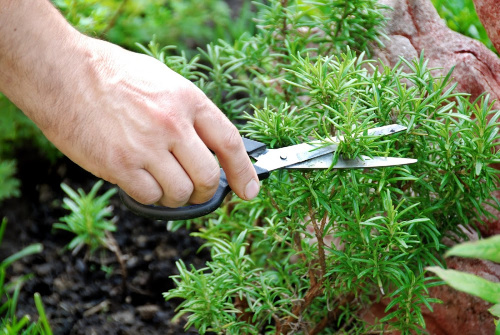
pH level for Rosemary: 5.5 – 6.0
10. Sage
Sage will thrive in sandy, loamy, and well-drained soil. You do not have to fertilize sage very often, it’s a pretty easy herb to grow without a lot of fuss.
Plant the seeds in good potting soil and transplant to a location with full sun and well-drained soil. You can transplant the seedlings when the soil temperature is 60-70 degrees F.
Plants will grow from 12 inches to 30 inches in height.
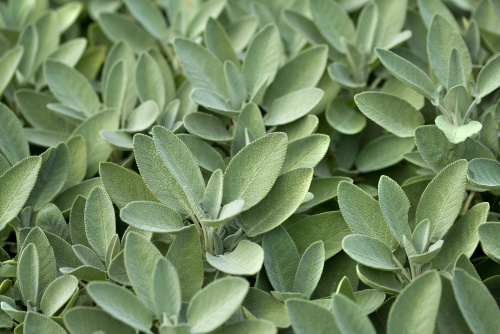
pH level for Sage: 5.5 – 6.5
11. Thyme
Thyme is a perennial shrub with light branches and small purple-pink flowers. It’s a little harder to grow thyme from seeds, but not impossible. You have to be patient to get the seeds to germinate, so plant more seeds than you expect to transplant outside.
You need to plant the seeds indoors 8-10 weeks before the last spring frost in well-drained soil. The soil needs to be 70 degrees F before transplanting the seedlings. The plants will grow from 6-12 inches in height.
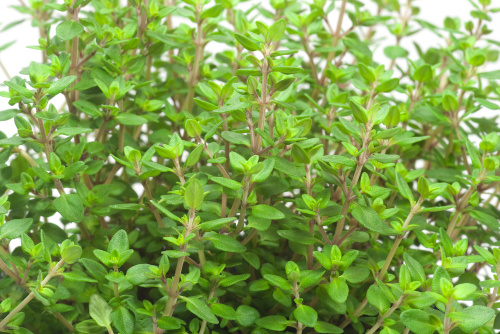
pH level for Thyme: 5.5 – 7.0
12. Tomatoes
Let’s talk about tomato choices. You have to decide if you are just going to eat BLT’s, that’s awesome! If you want to make salsa, tomato juice, or spaghetti sauce you need to think about which tomatoes are best to use.
Of course, these have to be good for your area. I only know Utah, so I will share what I have done for years. These are 100% Heirloom/Non-Hybrid/Non-GMO tomatoes. I buy all my seeds from SeedsNow
- Abraham Lincoln: 1 lb. heirloom, great for ketchup and tomato juice. Easy to grow and matures in 85 days.
- Beefsteak: large tomatoes over 2 lbs. easy to grow, great for slicers and matures in 85 days.
- Bonnie’s Best: 6-8 ounce fruit, great for slicers or canning. Matures in 85 days.
- Marion: chefs prefer these crack-resistant tomatoes. Great for salads or sandwiches. Matures in 75 days.
- Pear: pear-shaped fruits that grow in clusters. Great for salads. Matures in 75 days.
- Homestead: a popular heirloom variety. A good one for canning and they are great in a hot climate. They mature in 80 days.
- Mortgage Lifter: they produce large tomatoes, up to 2 lbs. Easy to grow and matures in 70 days.
- Money Maker: it’s one of the most reliable tomatoes you can grow. They grow up to 8-ounce size tomatoes. They are easy to grow and mature in 85 days.
Best Time To Plant
The best time to plant your seeds indoors is about 6-8 weeks before the last expected spring frost in your neighborhood. You can plant your seedlings or plants about two weeks after the last spring frost.
You can enter your zip code on this website to find the best dates for you to get started. Farmer’s Almanac First and Last Frost Dates By Location
It’s really easy to grow tomatoes from seeds. You can start with seed pellets or plant them in smaller containers and transplant them to larger containers as needed.
The seeds do not need light, so you can put them on top of your refrigerator to keep them warm to germinate. As soon as the seedlings pop up they need sunshine.
You can put them on a window shelf or a table close to the window. You should see them poke through the soil in 7-10 days. I purchase seed pellets from SeedsNow.
The seedlings need the temperatures to be 70 degrees F during the day and at least 40 degrees F at night. Once the seedlings reach 4 inches tall transplant them into larger containers. Please plant them deeper than other vegetables.
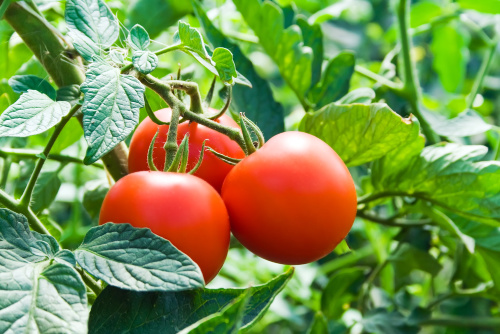
pH level for Tomatoes: 6.0 – 6.8
Please Check Out What To Plant Each Month:
- What To Plant In January
- What To Plant In February
- What To Plant In March
- What To Plant In April
- What To Plant In May
- What To Plant In June
- What To Plant In July
- What To Plant In August
- What To Plant In September
- What To Plant In October
Final Word
I hope you enjoyed my post on the 12 vegetable seeds you should plant in April. It’s all about being self-reliant, right? If you have a Farmer’s Market close to you, that is awesome! Check them out for very fresh fruits and vegetables.
If you have a lot of acreage, you rock! I have a very small lot and I’m learning to work with clay soil. It’s not fun, but I’m determined to grow most of our food. Please be prepared for the unexpected. May God bless this world. Linda

The post What To Plant In April appeared first on Food Storage Moms.
* Source


No comments:
Post a Comment